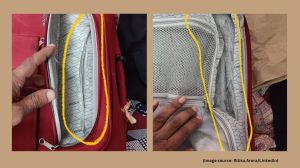90% of low-income urban workers’ debt is ‘informal’
Even as the government has sought to waive off the debt of a large proportion of the rural poor...

Even as the government has sought to waive off the debt of a large proportion of the rural poor, their urban counterparts, in many cases, seem to be even worse off. Statistics show that almost 90 per cent of the 2.8 million low income urban workers who borrowed in the last two years, obtained loans from ‘informal sources’ like moneylenders, friends and relatives at very high interest rates — contrary to the popular perception that urban areas have better access to institutional credit.
Only 10 per cent managed to secure loans from banks, cooperative societies and micro finance institutions. Put together, the urban poor accumulated outstanding debt of over Rs 5,300 crore over the last two years, which is estimated to be 60 per cent of the total outstanding debt of all 19 million urban poor currently. And only 22 per cent of this lending came from the institutional credit net. (An urban low income worker is defined as one with an annual household income of up to Rs 39,600)
On the other hand, small and marginal farmers who form the biggest component of the ‘rural poor’ fared markedly better, securing almost 25 per cent of their loans through formal channels. Statistics indicate that the largest proportion of urban low income borrowers (48 per cent) obtained funds from relatives and friends, while 24 per cent approached moneylenders. In contrast, 32 per cent and 41 per cent of the small and marginal farmers resorted to loans from these sources respectively. The statistics come from a survey of 1 million houses conducted by Invest India Market Solutions last year.
The highest number of these low income workers turned out to be ‘own-account workers’ like domestic help, rickshaw-pullers and carpenters, who do not operate on a fixed contract. Almost half of them lived in class 1 towns having populations greater than 1 lakh. As in the case of the rural poor, almost half of these urban borrowers secured informal loans at interest rates greater than 36 per cent. Even self-help groups, which are thought to have greater penetration in urban areas, failed to provide any succour to the poor there.
“It is a fact of the matter that financial inclusion for urban poor is not much better than in rural areas. Banks are hesitant to lend to urban poor since their income tends to be less regular and much more volatile,” says National Council for Applied Economic Research director general Suman Beri. The survey findings too indicate that 25 per cent of urban poor reported problems in generating a sustainable, level income throughout the year.
Banks agree that lending to the urban poor is often much riskier. “It is difficult for commercial banks to go down the income tier below a certain level and so lending becomes limited to the affluent and not the indigent,” says HDFC Bank chief economist Abheek Barua. “Many banks have tried to lend to this particular section but the experience has been bad.”




- 0115 hours ago
- 0215 hours ago
- 0315 hours ago
- 0415 hours ago
- 0516 hours ago



























